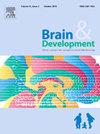新发难治性癫痫持续状态(NORSE)的免疫失调:当前的见解和治疗观点
IF 1.3
4区 医学
Q4 CLINICAL NEUROLOGY
引用次数: 0
摘要
目的越来越多的证据表明,隐源性新发难愈性癫痫持续状态(c-NORSE)是由先天免疫功能障碍导致炎症加剧引起的。虽然已经实施了免疫疗法,但其疗效仍然是可变的和不可预测的。方法:我们对报道NORSE患者炎症生物标志物或评估靶向免疫治疗的研究进行了全面的文献综述。并对今后的研究方向和治疗前景进行了展望。结果共有29项研究报告了至少5例患者的炎症生物标志物。大多数集中于c-NORSE,通常描述入院时脑脊液多细胞症,通常为淋巴细胞性,通常为轻度。先天免疫相关的促炎性细胞因子水平升高在c-NORSE中一直被报道。一项大型国际研究进一步证实c-NORSE患者的细胞因子水平明显高于其他顽固性癫痫持续状态患者,提示先天免疫在c-NORSE病理生理中的重要性。最近的一项研究确定了c-NORSE中具有不同炎症特征的亚组,提示不同的治疗方法。超过30个病例系列或报告记录了靶向免疫疗法在北欧鼻鼻炎中的应用。最常用的是anakinra (il - 1拮抗剂)和tocilizumab (il - 6拮抗剂),两者在癫痫发作控制方面的疗效似乎相当。最近,鞘内地塞米松引起了人们的兴趣,特别是在儿科病例中,显示出有希望的疗效,没有报道的副作用。其他新兴的方法包括canakinumab(抗il - 1抗体),Janus激酶(JAK)抑制剂和肿瘤坏死因子α (tnf - α)抑制剂。结论最近的研究提高了我们对先天免疫障碍在c-NORSE发病和进展中的认识。此外,他们强调了患者的异质性,强调了针对特定炎症途径的个性化策略的必要性。本文章由计算机程序翻译,如有差异,请以英文原文为准。
Immune dysregulation in new-onset refractory status epilepticus (NORSE): current insights and therapeutic perspectives
Objective
Emerging evidence suggests that cryptogenic new-onset refractory status epilepticus (c-NORSE) arises from innate immunity dysfunction leading to exacerbated inflammation. While immunotherapies have been administered, their efficacy remains variable and unpredictable.
Methods
We conducted a comprehensive literature review of studies reporting inflammation biomarkers in patients with NORSE or evaluating targeted immunotherapies. Additionally, we discussed future research directions and therapeutic perspectives.
Results
A total of 29 studies reporting inflammation biomarkers in at least five patients were analyzed. Most focused on c-NORSE, frequently describing cerebrospinal fluid pleocytosis, often lymphocytic and usually mild, upon admission. Elevated levels of innate immunity-related pro-inflammatory cytokines were consistently reported in c-NORSE. A large international study further demonstrated significantly higher cytokine levels in c-NORSE compared to other refractory status epilepticus patients, suggesting the importance of innate immunity in c-NORSE pathophysiology. One recent study identified subgroups with distinct inflammatory profiles among c-NORSE, suggesting different treatment approaches.
More than 30 case series or reports have documented the use of targeted immunotherapies in NORSE. The most commonly used are anakinra (IL1 antagonist) and tocilizumab (IL6 antagonist), both showing seemingly comparable efficacy in seizure control. Recently, intrathecal dexamethasone has gained interest, particularly in pediatric cases, showing promising efficacy with no reported side effects. Other emerging approaches include canakinumab (anti-IL1 antibody), Janus kinase (JAK) inhibitors, and tumor necrosis factor alpha (TNFα) inhibitors.
Conclusions
Recent studies have advanced our understanding of innate immunity disturbances in c-NORSE onset and progression. Moreover, they highlight patient heterogeneity, emphasizing the need for personalized strategies targeting specific inflammatory pathways.
求助全文
通过发布文献求助,成功后即可免费获取论文全文。
去求助
来源期刊

Brain & Development
医学-临床神经学
CiteScore
3.60
自引率
0.00%
发文量
153
审稿时长
50 days
期刊介绍:
Brain and Development (ISSN 0387-7604) is the Official Journal of the Japanese Society of Child Neurology, and is aimed to promote clinical child neurology and developmental neuroscience.
The journal is devoted to publishing Review Articles, Full Length Original Papers, Case Reports and Letters to the Editor in the field of Child Neurology and related sciences. Proceedings of meetings, and professional announcements will be published at the Editor''s discretion. Letters concerning articles published in Brain and Development and other relevant issues are also welcome.
 求助内容:
求助内容: 应助结果提醒方式:
应助结果提醒方式:


